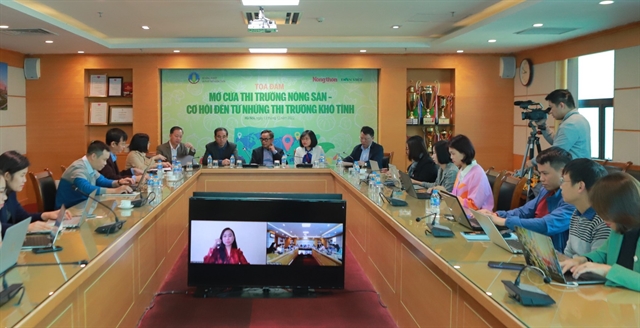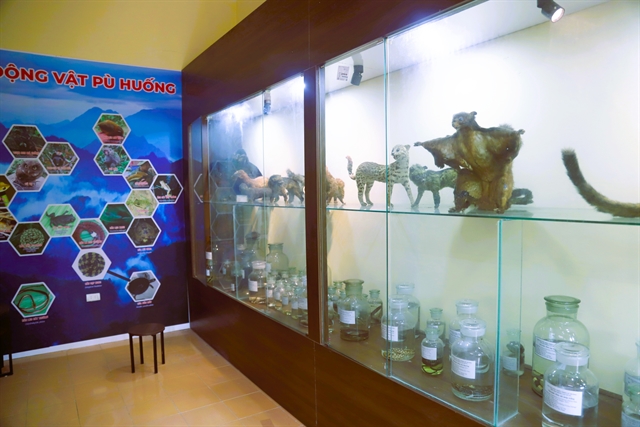 Economy
Economy


|
| MARD in collaboration with Nông thôn ngày nay (Countryside Today) newspaper organised an online seminar on opening the agricultural market. — Photo baochinhphu.vn |
HÀ NỘI — Việt Nam has experienced significant market fluctuations this year, but has made progress in expanding the market for its agricultural products.
The Ministry of Agriculture and Rural Development (MARD) in collaboration with Nông thôn ngày nay (Countryside Today) newspaper organised an online seminar on opening the agricultural market on Tuesday.
Many kinds of agricultural products have been accepted by fastidious markets thanks to the effective coordination of MARD with ministries, agencies and enterprises.
Accordingly, MARD and the General Administration of Customs of the People’s Republic of China have successively signed protocols to officially export many kinds of agricultural products to China, such as passion fruit, banana, durian, sweet potato, and bird’s nests.
Recently, the US officially opened the door to Việt Nam's pomelo; longan and macadamia nuts are also allowed to be exported to Japan; New Zealand opens the door to Việt Nam's green lemons; meanwhile, many kinds of high-quality Vietnamese rice have appeared in supermarkets of the US, the EU, and Japan.
The results of opening the market have contributed to helping Việt Nam's agricultural, forestry and fishery exports reach about US$49.04 billion in the first 11 months of this year, up 11.8 per cent over the same period last year.
Delegates at the seminar strongly agreed that market opening has been a crucial factor in the growth of the agricultural sector. However, they also noted that maintaining and sustainably developing the market is an even greater challenge.
This required each farmer and business to make efforts to change their production thinking, and meet the requirements of each market.
Ngô Xuân Nam, Deputy Director of SPS Việt Nam Office, MARD, said that in order to open the market, it was necessary to strengthen links not only with farmers but also with industries and businesses.
To date, Việt Nam has signed 18 Free Trade Agreements (FTAs), many of which are associated with major markets such as the US, the EU, and Japan.
Sharing about the market's difficulties and opportunities for seafood next year, Lê Hằng, communications director of the Việt Nam Association of Seafood Exporters and Producers (VASEP), said that seafood exports had slowed since the fourth quarter of this year, this trend might extend to the first quarter, even the first half of next year due to high and prolonged inflation, along with changes in consumer preferences and habits.
Consumers have no longer focused on high-value products as before, but they preferred mid-priced products, she said.
Therefore, the number of orders would decrease deeply, and even some small businesses would not have orders, said Hằng.
"When traditional markets such as the EU, the US, and Japan have big changes in consumer preferences and demand for Vietnamese seafood products, we determine that the Chinese market will be a potential market,” she added.
Accordingly, there would have to be preparations and changes to gain deeper access to the Chinese market, each segment of the local markets in the Chinese market, noted Hằng. — VNS




